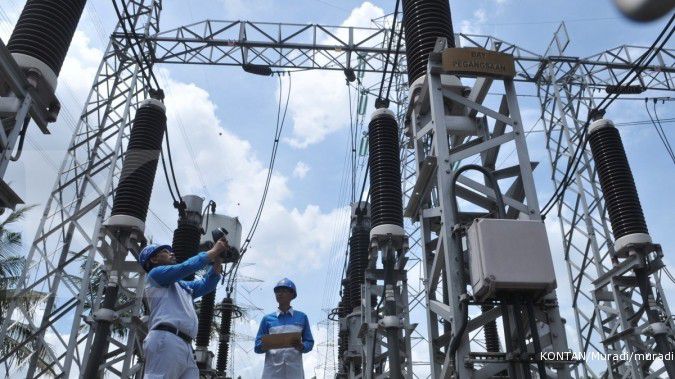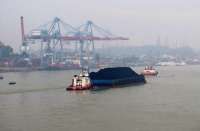JAKARTA. Citarum River in West Java and the entire island of Kalimantan are among the world’s 10 most polluted places alongside Chernobyl in Ukraine, says an annual report by environmental organization Green Cross Switzerland and international nonprofit organization Blacksmith Institute.
The report, The World’s Worst 2013: The Top Ten Toxic Threats, published on Monday, also said that around 200 million people in the world had been exposed to toxic pollution, which could lead to various health risks, including cancer.
Citarum River, which provides 80 percent of surface water to Jakarta and irrigates farms that supply 5 percent of Indonesia’s rice, was among the most polluted due to hazardous industrial waste.
Textile factories in Bandung and Cimahi were found to be the major toxic waster contributors to the river that was also judged the dirtiest river in the world in 2007.
As for Kalimantan, the report said that much of the pollution there had come from the vast small-scale gold mining in the area that utilized mercury in the gold extraction process.
The mercury, which is burned off during the smelting process, released toxic chemicals into the air and waterways, where it might accumulate in fish and water, it said.
Greenpeace toxin-free water campaign manager Ahmad Ashov said the report showed that the government lacked in its efforts to control the use of toxic materials in industry.
“The government only controls the waste, when in fact it should ban the utilization of all hazardous substances,” Ashov told The Jakarta Post on Tuesday.
Ashov said that based on Greenpeace investigation, around 100,000 toxic materials were being used without being evaluated.
“Government Regulation No. 74/2001 on hazardous and toxic materials only regulates around 255 substances, when in fact there are actually a lot more substances being used out there,” he said. “Some of the substances that have not been regulated are nonylphenol ethoxylate and pthalate, which can cause reproductive disorders and cancer. These substances were found in Citarum River,” he said.
The two substances have been phased out of many products in the United States and Europe due to health risks, yet they are still widely use in Indonesia’s textile industry.
“The short-term impact of these hazardous chemicals are, for instance, skin diseases, which have infected residents of Majalaya, West Java. This could lead to skin cancer in the long run,” Ashov said, citing that health impacts on Jakarta residents had yet to be investigated.
Greenpeace forest political campaigner Teguh Surya said environmental destruction in Kalimantan had been so massive that the public could easily see the damage that had been done without an investigation being conducted.
“Air and water pollution in Kalimantan are not solely caused by mercury. Coal mining and oil palm plantations have significantly contributed to pollution in the area,” he said.
Meanwhile, deputy minister of pollution control MR Karliansyah said that major companies were not to blame for the pollution as they had followed the proper procedures for the processing of toxic waste.
He said that small companies could be blamed for the pollution. “It is hard to force the small scale industry to comply with these regulations because most of them have no installation to process the waste. Also, 70 percent of the water pollution in Indonesia comes from domestic waste, which is still very hard to control,” Karliansyah said.
He said that the government had made plans to ban new chemical substances that were considered hazardous, to amend government regulation No. 74/2001.
Karliansyah shrugged off the new pollution report, saying that it might have exaggerated the problem. “I think it is an exaggeration to put Citarum and Kalimantan alongside Chernobyl,” he said.
The list also includes Agbogbloshie in Ghana, the second-largest waste processing area in West Africa; Hazaribagh in Bangladesh —home to 95 percent of the country’s tanneries and Dzerzhinsk in Russia, which is the center of the country’s chemical manufacturing industry. (Nadya Natahadibrata/The Jakarta Post)
/2012/07/04/1591184450p.jpg)














